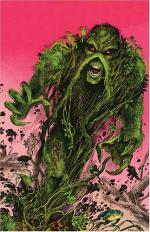|
This section contains 524 words (approx. 2 pages at 300 words per page) |

|
From the seventeenth century, through the Middle Ages, and until the late nineteenth century, it was generally accepted that some organisms originated directly from nonliving matter. Such "spontaneous generation" appeared to start in decaying food, urine, and manure because worms or maggots could be seen hatching there after a few days. It was also believed that animals that lived in mud, such as frogs and salamanders, were generated by the mud in which they lived. Additionally, there were the widely held misconceptions that rats were spontaneously generated in piles of garbage or created from magical recipes. One seventeenth-century recipe even called for the creation of mice from sweaty underwear and wheat husks placed together in a jar for twenty-one days. Although such a concept may seem ludicrous today, it was congruous with other cultural and religious beliefs of the time.
Francesco Redi, an Italian physician, naturalist...
|
This section contains 524 words (approx. 2 pages at 300 words per page) |

|


